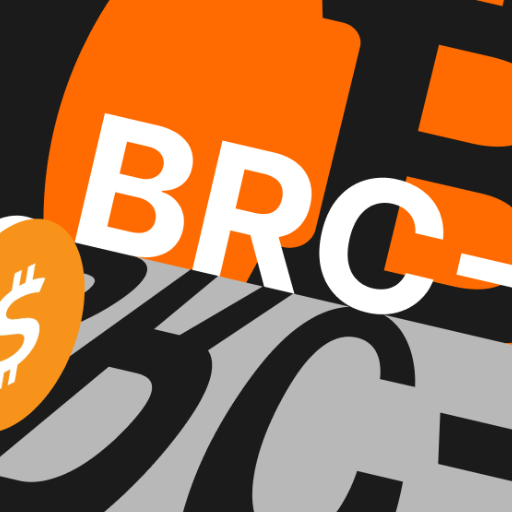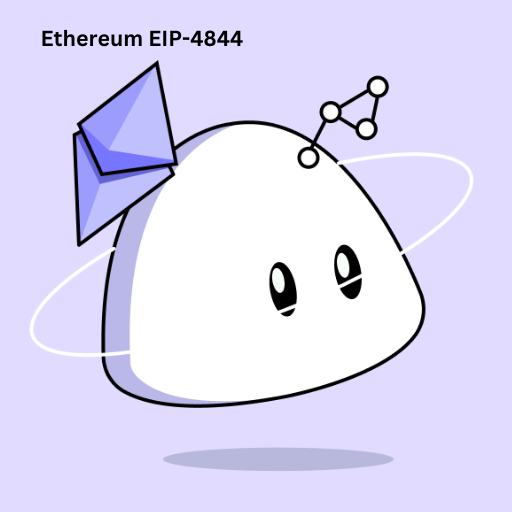What is BRC20 Token?
Domo, a confidential inventor, introduced BRC-20 tokens to the open on the 9th of March, 2023. Using normal writing, these tokens form a trial token rule. They are Bitcoin’s way of life and can be interchanged.
BRC-20 standard is interestingly unique among the EVM chains because popular tokens do not depend on smart contracts; rather, users can upload a script file into BTC blockchain that may contain signals for linking various coins with different Satoshis.
Users are able to use BRC20 token development to deploy, mint and transfer tokens, so that JSON data is embedded in ordinal inscriptions. This is what has made it catchy among the crypto community leading to increased curiosity as well as use of new opportunities within cryptocurrencies.
Creation of BRC-20 tokens
If you would like to create your own BRC-20 tokens then you need to go through a registration process which determines what parameters they should have. Below is a guide for those wishing to take part in it.
Define Token Parameters
The creator influences how the unit issuance is going to be on a BRC-20 token.The creator can mint a hundred percent of it when the contract is being deployed or allow other users to mint some.The token usage is affected by such choices.
Interact with a Compatible Wallet
To deal with BRC-20 tokens, your wallet should preferably be P2TR address enabled with coin control function individualized coin management, among others. Examples are Ordswap, Uniswap and Oracles await support. Missing these functionalities puts at stake the token or record.
Consider Associated Costs
A wallet with enough Bitcoins is required for covering registration; which involves miners’ network processing payments and are constantly fluctuating based on market needs so one has to mind these fluctuations when creating BRC-20 tokens using UniSat among others.
Mint the Token
There are numerous services that enable one to make subscriptions for BRC-20 tokens or donate them to someone else’s issue. For instance, some of these include Ordinalsbot, Unisat and Ordswap among others which have marketplaces for trading such assets. So that all can go well with this system, one will be required to input an Ordinals-compatible Bitcoin address (wallet’s address) before making payments which will be charged according to the current price rate.
Wait for Verification
When the block that has the asset is confirmed by a miner, BRC-20 tokens are displayed exclusively in user wallets. It is important to calculate the charges accurately since being stuck on the internet may make you not register if this happens, it’s important to calculate fees right as becoming stranded on the web could mean never registering again, plus there are no refunds from these establishments usually.
How does BRC-20 work?
To truly understand the mechanics of BRC-20, it is crucial to delve deeper into the foundational technology it is based on: the Ordinal Protocol .
In January 2023, the Ordinal Protocol was introduced so as to assign each satoshi a unique identifier based on its mining order; thus making it possible to index all satoshis throughout Bitcoin’s network. Because of this protocol, BRC20 allows people fill Satoshi’s “contents,” like texts, sound files, images among others directly from JavaScript Object Notation (JSON), attaching each one to definite satoshi and turning them into tokens in the process.
Simply put, Sam carved stones are like NFTs onto Satoshi that help in keeping track of transactions using ordinal measure; thus, providing personhood of the holder and ability to participate in trades. Note; however, that not all ordinals conform to the BRC-20 standard despite that all BRC-20 tokens are made using them. It is the individual JSON information that distinguishes one BRC-20 token from another and it is what gives it its features.
On the blockchain, BRC-20 tokens coexist with Bitcoin, much like Ethereum works with altcoins. BRC-20 tokens are just like Bitcoin i.e. they are persistent, immutable and secure.
Key differences between BRC-20 and ERC-20 tokens
Despite the similarity in names, BRC-20 and ERC-20 tokens present fundamental differences in their structures and functionalities:
Smart Contracts:
● ERC-20 (Ethereum): Ethereum’s ERC-20 tokens are orchestrated within smart contracts hence providing them with more versatile and self-governing administration facilities that enable them to self-manage the process of issuing new tokens and keep parallel sub-accounts and review user balances.
● BRC-20 (Bitcoin): While BRC-20 tokens are limited in scope to token creation and transfer without the use of smart contracts, they are seen as less sophisticated versions of their ERC20 counterparts.
Origin and Development:
● ERC-20: A proposal from developers of Ethereum Fabian Vogelsteller and Vitalik Buterin resulted in ERC-20 tokens emerging, this happened on November 19, 2015. Having been on the market for several years, they have gained wide acceptance and are also used by various companies that show great interoperability with the ecosystem.
● BRC-20: In contrast, relatively new and untested BRC-20 tokens do not utilize smart contracts during creation which makes them less complex. But on the other hand, because they are still a new thing, their number is significantly lower in terms of compatibility with other platforms and wallets when you compare them with ERC-20.
Functional Complexity:
● ERC-20: ERC-20 tokens have special features like token burning, token freezing and complex program execution rules in smart contract environments.
● BRC-20: Although, comparing the functions of the two, ERC-20 is far much bigger and can undertake intricate processes, Unlike BRC-21, freezing commands cannot be given and no token burning can be done on it. At present, ERC-20 commands more features than BRC-3 particularly concerning the former’s complexity whereby it is more versatile thus deep in its operations.
Security:
● ERC-20: ERC-20 tokens have extensive experience in terms of security and have proven their robustness in the market. Many companies use them without serious problems in security.
● BRC-20: In the cryptocurrency market, BRC-20 tokens have faced security challenges as a new and experimental technology. Although benefiting from this, double spending cases are some of the security challenges facing BRC-20 tokens which are based on bitcoin.
Advantages and disadvantages of BRC-20 Token
Advantage:
BRC-20 tokens, a new kind of token that is constructed perfectly to fit the bitcoin blockchain, combining different useful properties. Security at its best and decentralized nature of the Bitcoin blockchain is what ensures that no conflict occurs when it comes to BRC-20 token utilization.
The reason for this is that these particular tokens adhere to the principle of fungibility i.e., they can be exchanged and signify varying values at the same time
Their inherent adaptability makes them an ideal candidate for numerous sorts of applications, like loyalty programs and crowdfunding platforms.
BRC-20 tokens are transferable which implies that it can be effortlessly sent and received across various wallets linked to the bitcoin network. This built-in aspect ensures that it helps in simplifying the creation process and ensures wide reach throughout a variety of users.
It is a good idea to note that transaction costs for BRC -20 tokens are paid in bitcoins, which are among the cheapest crypto currencies available today. This is a profitable feature that has made it cheaper to use them by all kinds of users be it individuals or companies since they make fast transactions possible.
The adaptability of BRC-20 tokens offers a solution that can be used in different situations, making it possible to be applied in various platforms such as loyalty programs, crowdfunding platforms and decentralized exchanges.The versatility in use cases makes it possible for the same token to be considered several different digital gadgets.
Disadvantage:
But it is essential to realize that BRC-20 tokens have certain risks that might be associated with them, as they follow the ordinals protocol system which is an initiative in infancy stages for now implying that there are prospects of unveiling some bugs or vulnerabilities along the way as its growth continues.
Scalability is another aspect to consider. Consider the Bitcoin Network: Scalable like Ethereum but not as Ethereum in spite of its resilience. Because of this, it is possible that we might face some congestion if BRC-20 tokens were to become popular.
It is important to keep in mind that BRC-20 tokens are not as universally accepted as ERC-20 tokens because they do not have the same level of support among users. Consequently, there may be a surge in demand for these kinds of tokens. Consequently, it might turn out that only several wallets or exchanges will be able to host them against all others.
Top 5 Cryptocurrencies Using BRC-20 Tokens
You would easily understand why BRC-20 is important in the world of digital money and what it represents if you know Pepe Coin as well as other popular internet jokes which are now referred to as “meme coins”. Different types of an object representing a value have been produced under this protocol because it shows how you can create tradable assets.
Conclusion:
Initially, BRC-20 tokens were conceived on the Bitcoin blockchain as an experimental standard aimed at replication for Ethereum’s ERC-20 token standard meant for enabling developers to create and exchange fungible tokens within Ordinals protocol.
As with anything new, BRC-20 tokens face several stumbling blocks. Although it is an inventive standard with great potential, its ecosystem gets affected easily by industry norms and token economy fluctuations. Ensure that you carry out your own investigations before you proceed.





